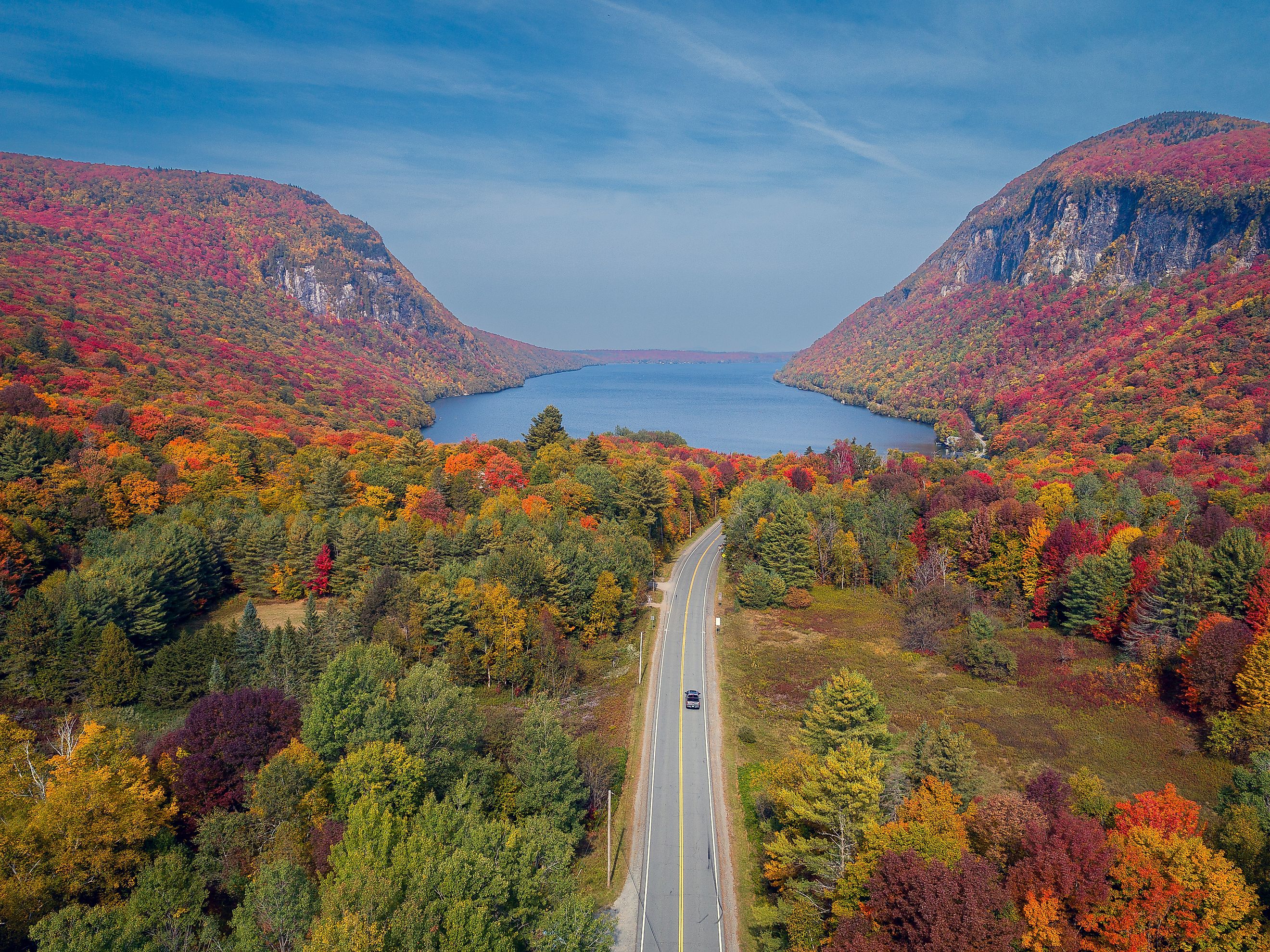
Lake Willoughby, Vermont
A favorite of the nature poet Robert Frost, who was heavily inspired by the beautiful Vermont scenery, Lake Willoughby is the deepest lake in the state and was named ‘third best lake in New England’ by Yankee Magazine. This year-round destination, perfect for hiking, cross-country skiing, boating, and fishing, is close to several natural attractions, including Willoughby State Forest, Mount Pisgah, and Mount Hor. Located in northern Vermont, half an hour’s drive from the Canadian border, Lake Willoughby is also near several major hubs, including Montpelier and Newport, so there’s no excuse not to put this beautiful lake on your vacation bucket list.
Geography Of Lake Willoughby
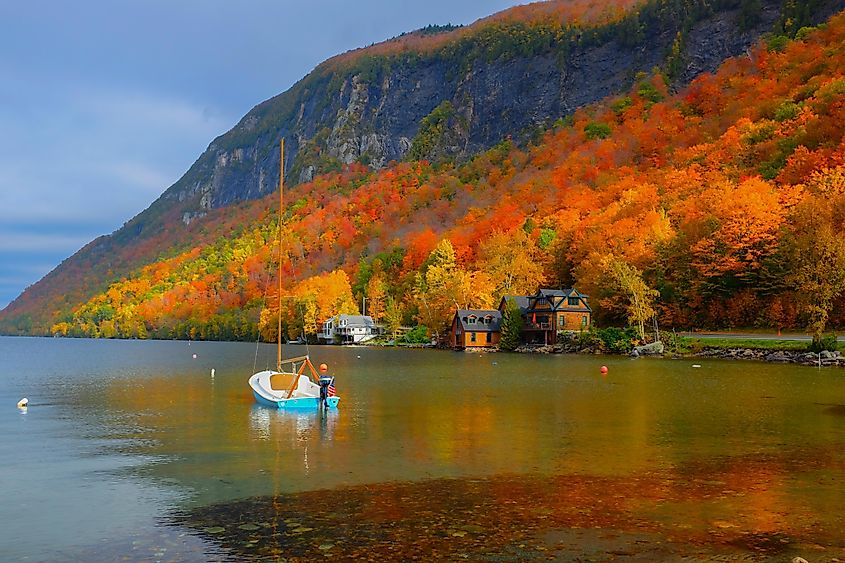
At 1653 acres and with a maximum depth of 308 feet, Lake Willoughby is a large body of water with varying terrain around its shoreline and an interesting geological past. It’s no wonder the lake has a timeless beauty—it was formed more than 12,000 years ago when glaciers carved a deep groove into the granite bedrock. Sandwiched between the towering peaks of 2751 ft Mount Pisgah and 2648 ft Mount Hor, the picturesque body of water looks more like a Norwegian fjord than a Vermont lake.
Spring-fed and glacial, Lake Willoughby is known as being one of clearest and cleanest lakes in the state. It’s long and thin with a large public beach at the north end and a smaller beach to the south. Be warned, if you’re visiting the latter, clothing is optional!
Located in Orleans County, the closest town to the lake is Westmore, a tiny community on its northeastern shore. Lake Willoughby is the centerpiece of the Lake Willoughby Natural Area, a 4,666-acre area that was officially designated a National Natural Landmark in 1967.
A Brief History Of Lake Willoughby
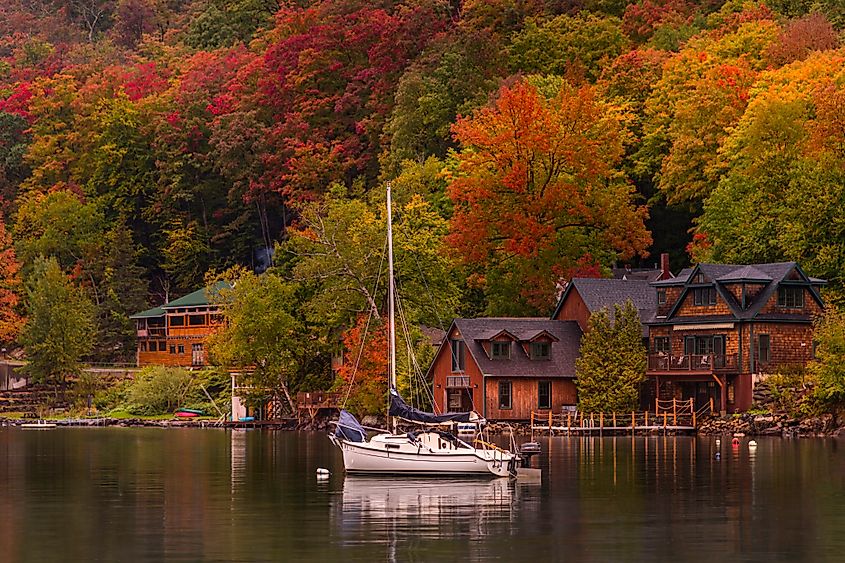
Immortalized in Robert Frost’s poem, ‘A Servant to Servants, ’ published in 1915, Lake Willoughby has long been known as a resort and recreation destination. Small steamboats ferried tourists across the lake from 1884 to the early 1900s as vacationers came to enjoy a restorative break in nature.
There are a few different accounts of how the lake got its name. In one, it was named by the two brothers with the surname of Willoughby who settled the town of Westmore. In another, a man named Willoughby crossed the lake in winter, fell through the ice, and had the lake named after him as a memorial.
As is common with many centuries-old glacial lakes, Lake Willoughby has its fair share of lore and legends. The lake is supposedly home to a sea monster named Willy. It’s also rumored to be connected to nearby Crystal Lake via an underground river. The latter myth comes from a story where horses went through the ice on Lake Willoughby, and their harnesses were later discovered floating in Crystal Lake.
One feature of Lake Willoughby that has really captured the public imagination is Devil’s Rock. This rocky boulder on the shore of the lake has a distinctive red figure that supposedly looks like a devil’s face when seen in the water’s reflection. Also known as Devil’s Den, the rock is mentioned in newspapers from the 1800s, but to this day, no one knows when or why it was originally painted.
Lake Willoughby Wildlife
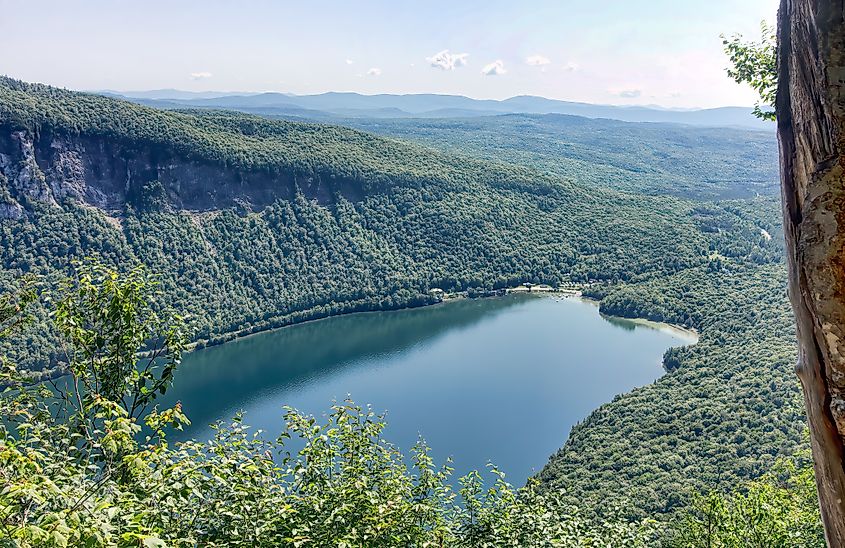
Deep, pristine, and spring-fed, it’s no wonder Lake Willoughby is known as a paradise for anglers. This busy lake is home to a wide range of species, including salmon, carp, largemouth and smallmouth bass, smelt, pike, muskellunge, bluegill, walleye, perch, and four different species of trout. Many species can be caught year-round, and visitors can either open-water fish or try ice-fishing in the winter. There are, however, specific seasons for species such as walleye, trout, and landlocked salmon, as well as limits on catch, so be sure to check local regulations before heading out with your rod.
The area around the lake is just as busy as the lake itself. Mounts Pisgah and Hor are nesting sites for Peregrine Falcons, and lucky hikers may also catch a glimpse of an American Bald Eagle while exploring the slopes. Closer to the shore, the woods around the lake are home to deer, moose, and black bears.
Recreational Activities
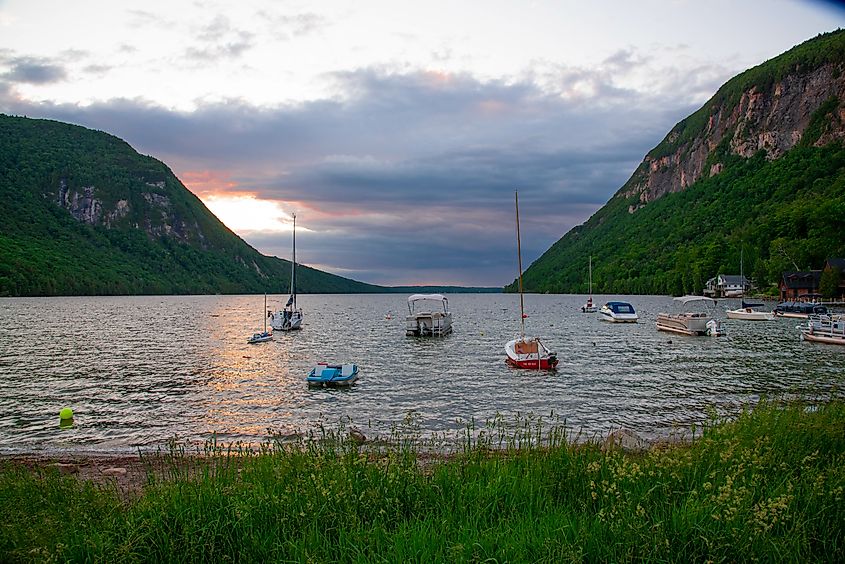
Vermont has always been the ideal destination for nature-lovers but the Lake Willoughby area is particularly known as a scenic gem. Aside from the boating, swimming, fishing, and paddling opportunities at the lake, there’s also lots to explore on shore. Willoughby State Forest covers a large area over the southern end of the lake where you can pick up over 12 miles of hiking trails looping around the lake’s southern shore or extending up to the summits of Mount Pisgah and Mount Hor, where hikers are rewarded with jaw-dropping views. In winter, these trails are popular with snowshoers. Visitors can also take advantage of over 7 miles of groomed Nordic ski terrain around Bartlett Mountain.
If you’re planning a stay at the lake, there are private campgrounds and cottages dotted along the shore. White Caps Campground to the south offers campsites, a general store, and watercraft rentals so you can enjoy a day on the water with a kayak, canoe, or paddleboard. For more historic lodgings, check out the WilloughVale Inn, the former vacation spot of Robert Frost and his family. Today, the inn is equipped with ten guest suites and six cozy lakefront cottages. Guests can also use the property’s lounge chairs, firepit, kayaks, and canoes.










